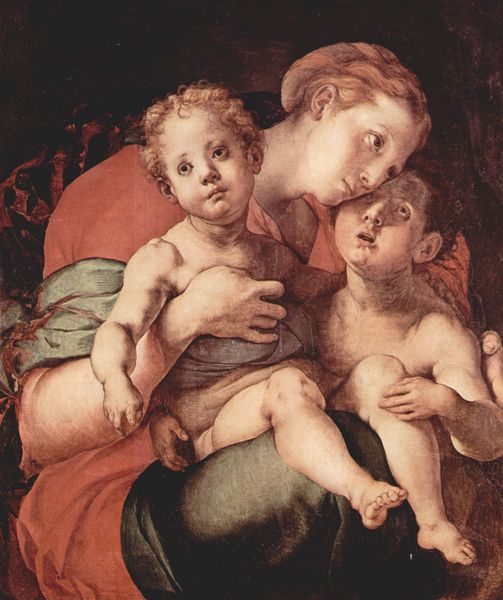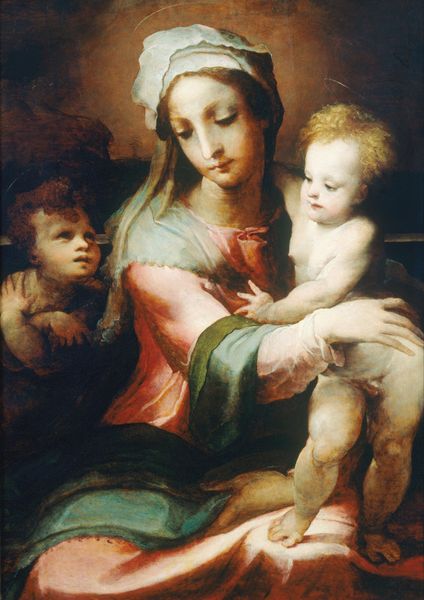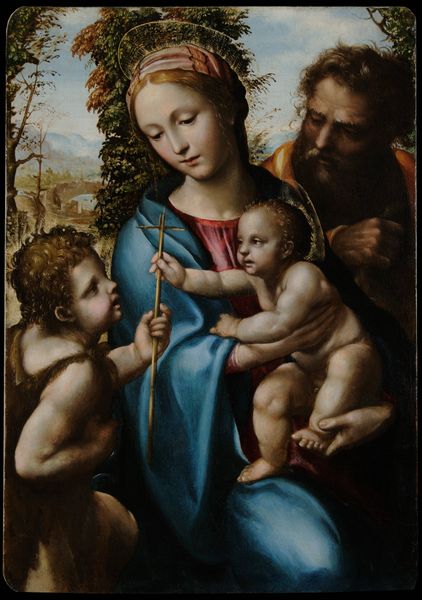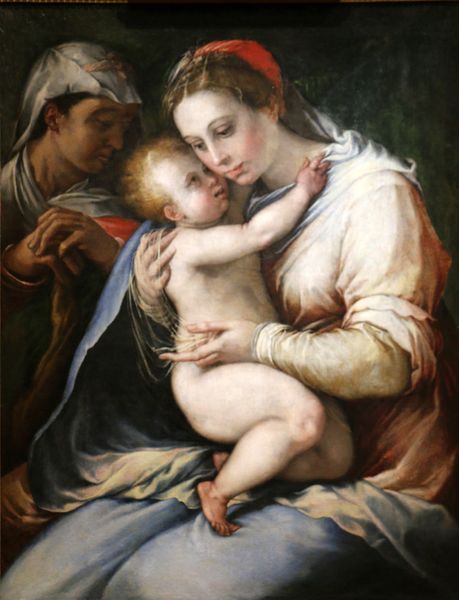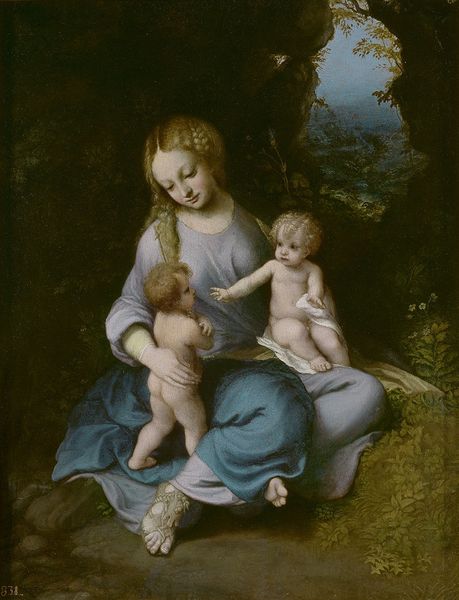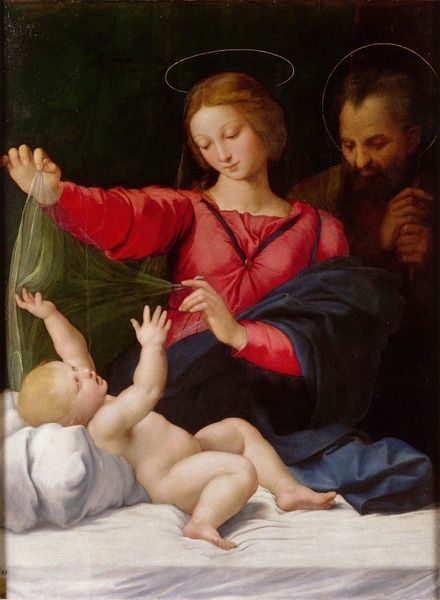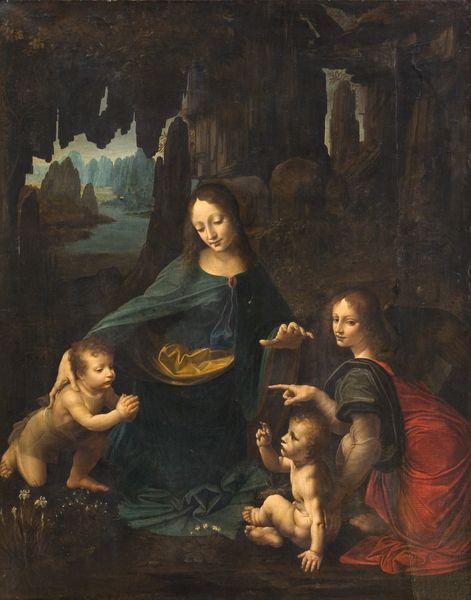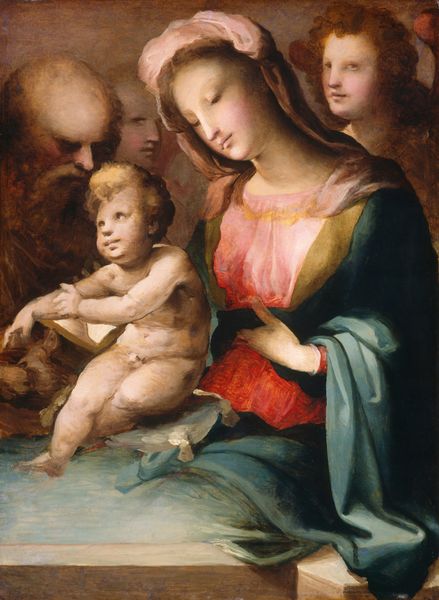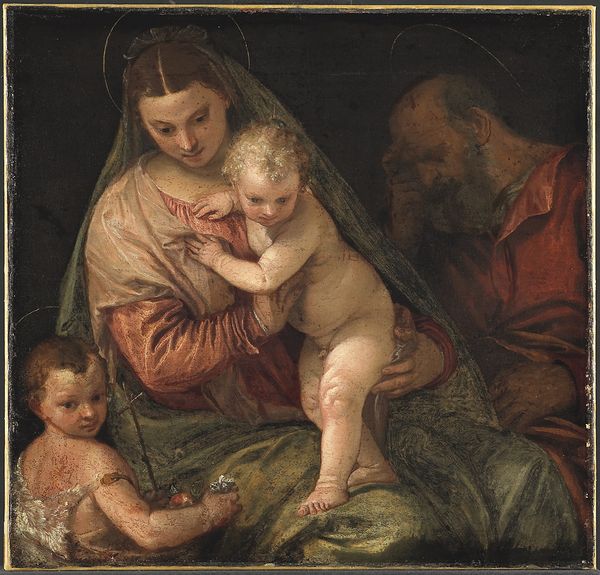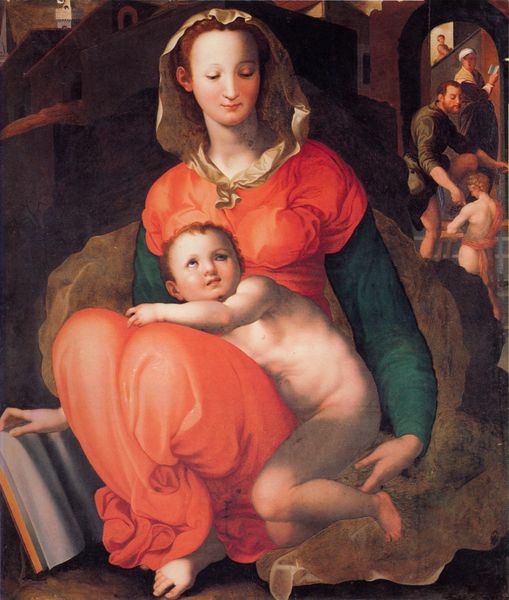
painting, oil-paint
#
portrait
#
high-renaissance
#
painting
#
oil-paint
#
figuration
#
oil painting
#
group-portraits
#
mythology
#
human
#
history-painting
#
italian-renaissance
#
portrait art
Dimensions: 103 x 84 cm
Copyright: Public domain
Curator: Raphael’s “The Virgin of the Rose,” created around 1518, presents a seemingly serene family portrait rendered in oil on panel. What strikes you first about this painting? Editor: Initially, it's the palpable sense of contained anxiety that I notice. The figures are clustered, yet there’s little joy in their interactions. What should be a tender tableau of motherhood feels strangely burdened. Curator: Indeed. Let's look at the composition. The figures are arranged in a pyramidal structure, characteristic of the High Renaissance, with the Virgin Mary at the apex. Notice the precision of line and the careful distribution of light, creating a balanced, harmonious whole. The inscription on the scroll spells "Iesus". How might that detail function formally within the painting? Editor: The 'Iesus' scroll disrupts this harmonious composition. It throws off balance by injecting textual meaning but also prefigures the destiny and identity embedded in the figure. As an object handled between Christ and John the Baptist, the visual bond underscores a shared history but speaks directly to a prophesied identity within the cultural, political milieu of the Renaissance Papacy and the looming shadow of the Reformation. Curator: A keen reading. Consider Raphael's use of color: the muted greens and reds create a somber, dignified atmosphere. Editor: That’s the heart of that feeling, yes— these color choices are doing a lot to downplay any expected jubilance or domestic warmth; I find that compelling in considering the artwork’s function, its location here at the Prado, given Spain’s complex relationship to faith, family, and power during and following this historical moment. Curator: Furthermore, consider the use of chiaroscuro, creating volume and depth. Formally speaking, the light seems to emphasize their humanity. Editor: To your point, the visual tension works to make us reflect on the complex tapestry of human emotion and their social and historical placement as a tool for legitimizing religious or political narratives, offering perhaps less divine intervention and instead presenting very human concerns over the fate of humanity as a social construct. Curator: Ultimately, I’d suggest, the technical skill here transcends mere representation, aiming to distill an essential, timeless quality. Editor: While I agree with your assessment of Raphael’s painterly excellence, I'd like to propose an additional lens. Through an activist approach, we bring to light these historical echoes and reimagine not just its formal legacy but also its continuing resonance in the narratives we perpetuate and question.
Comments
No comments
Be the first to comment and join the conversation on the ultimate creative platform.

